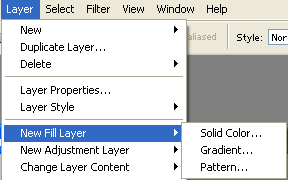20 February 2008
The Growing Trend Of Telephony
In its early days, VoIP telephony was considered by some to be a technologically unreliable fad, one that was shunned by mostly everyone who had long relied upon their traditional phone service company to provide them with dependable, if not costly, telephone service. Today, much has changed and VoIP telephony has not only vastly improved, but has attracted millions of new customers thanks to technological advancements and smart marketing.
Initially, voice quality with VoIP telephony was suspect, as conversations between users was often accompanied by crackling sounds and echoing. Indeed, drop offs due to connection problems was common, causing many to avoid making the switch. Still, as with virtually all emerging technologies, kinks have been worked out as newer, vastly improved versions are introduced. VoIP, for one, has undergone rapid transformation from fad to fixture in many homes and offices as quality levels have picked up while prices remain exceedingly low.
Indeed, price is a huge factor contributing to VoIPs rapid growth. Many VoIP telephony providers offer comprehensive unlimited local and long distance calling plans that start at less than $25 per month. Compare VoIP prices to those charged by most traditional phone service providers typically $70-80 per month and the potential annual savings is well over $500!
Yes, you have to shop around to find a high quality VoIP telephony provider, but all of the top companies offer similar deals with packages usually containing the following important features:
- Free local and long distance calls.
- Portable phone numbers, meaning you can take your existing phone number wherever you move; certain restrictions may apply.
- Special services offered at no extra charge including: caller ID, call forwarding, 3-way calling, call return, call transfer, voicemail, and more.
- Low, fixed monthly rates. No worrying about fluctuating phone bills!
In addition, most governments are taking a decidedly hands off approach to VoIP telephony and are not levying anywhere near the same high level of taxes on VoIP service as they have been on traditional phone service. Yes, take a close look at your current phone bill and you will see that double-digit fees really push up the monthly balance. Not so with VoIP telephony as it is treated in the same way as internet service.
There has been some concern about power outages and the loss of VoIP telephony service during these interruptions. Indeed, most people understand that if your home loses electrical power, then their traditional phone service would continue to work as phone lines are powered separately from electrical lines, while VoIP telephony phone service is stopped when the power goes out. To get around the problem, many VoIP telephony providers now give users a control panel where they can program their VoIP server to automatically reroute calls to their cell phone in the event of a power outage. So, there is no longer any excuse for you to not make the switch to VoIP telephony and begin realizing big savings today!
About The Author:
Click here to learn more about VoIP telephony: http://www.packet8.net Michael Brito is an internet marketing consultant for small business http://www.michaelbrito.com specializing in SEO and web strategy.
16 February 2008
If You Want To Get More Customers, Heres 10 Powerful Stories To Improve Your Ads And Sales Letters
Well, there's a good reason why... and here's how what you learnt as a young child could help you attract, and keep more customers...
Metaphors and stories have proven to be a powerful way of influencing other people. They are also extremely interesting to your potential customer, and connect with a deeper part of the human psyche.
HERES 10 OF THE MOST POWERFUL TYPES OF SALES STORIES YOU CAN INCORPORATE INTO YOUR ADS AND SALES LETTERS
1. Stories to introduce yourself
These are stories about who you are, why youre writing to them, and how you have assisted other people and/or businesses.
This is a perfect way to connect with your target audience and generate rapport. Reveal something personal about yourself within the story and establish credibility and trust.
2. Stories to overcome fears
Everyone has fears of some type. Identify the greatest fears and concerns your customer has. And then show how other people just like them who had the same concerns overcame them, and discovered there was nothing to worry about.
If youre selling a health product, the client may be concerned it will not work for them. Tell the story of somebody else who felt the same and where they are now. Perhaps incorporate this structure within one of your testimonials.
This is a classic Feel Felt Found approach. I understand how you feel. My previous customer used to feel the same way. His experience now is
3. Stories to enhance the ego
This type of story shows how people respect and look up to people who use your services, or own your product.
For example, if you were selling a Mercedes Benz you could talk about a guy who bought one recently and how his colleagues, family and friends were so impressed.
4. Stories which grab your prospects attention
These are used to get people to focus on you, your products and how you can benefit them. They explain why your customer should sit up and listen to you right now.
Heres an example from a sales letter from a company called The Supper Club
How can I get in on this deal?
The question was posed by a Daily Reckoning reader who was referring to a deal I mentioned. Unfortunately, it wasnt a stock. It was a private deal. And it was too late to get in anyway.
But its why Im writing you today.
5. Stories with product information
Dont just list the features & benefits of your product or service. Tell a story which integrates this information.
6. Stories about improved productivity
Outline exactly how your services and/or products have assisted companies to increase their profits, become more efficient, increase output and reduce down time.
Tell a before and after story of one of your customers. Youll never guess how much (other customers) business has changed since they started working with us
7. Stories about family togetherness
This type of story demonstrates how your product or services has caused families to come together.
8. Stories about money
The idea here is to show people how your product or service will save or make money for your customers.
For example, if youre a mortgage broker, give a case study of a past customer and how much money they have saved through swapping over to you.
If youre a PR company, give an example of how you helped one company get out of a rut
If youre an accountant, reflect on how you helped a specific customer save thousands of dollars on tax last year because youre up to date on all the tax changes.
9. Stories which instill security
This is a prime example of how you would go about selling an insurance policy. Tell a story about how your products have allowed your customers to sleep safely, and with peace of mind.
This could be used in the insurance industry, alarms, people selling trusts, pest and termite controllers, safe cars like Volvos or any industry where people buy to feel more secure.
At the same time, it could be used for anybody who helps people to make more money or ensures reliability. For instance, a marketing company could explain how safe one of their clients feels about their business with all the extra income being generated.
10. Stories to close the sale
Stories can be used here to close the sale and sum up all the benefits you have to offer.
What stories could you use to promote your business?
Scott Bywater is a direct mail copywriter and the author of Cash-Flow Advertising. To get a complimentary copy of his special report '7 Ways To Increase Your Turnover... No Matter What The State Of The Economy' (valued at $29.95) and a free subscription to his "Copywriting Selling Secrets" ezine where you'll discover how to write ads and sales letters that make people line up and practically beg you to do business with them visit his web site at
http://www.copywritingthatsells.com.au/
14 February 2008
About eBay
start up company founded in September 1995, eBay has started the trend of creating and organizing auctions for basically anything tradeable. The catch is, everything is done electronically or through the Internet.
To date eBay sells about 55 million hot items under up to 50,000 trade categories. This Internet-based marketplace is open 24 hours a day, seven days a week, no holidays. A person can shop for desired items anywhere he or she may be.
According to the company and other experts projections, there are currently about 157 million unique users to eBays services around the globe.
With so many people online, large number of items for sale, eBay assures that each user or client is accorded the fair and friendly treatment a generous shopper deserves.
Background
eBay is a major company listed in the United States under the small-capital index Nasdaq Stock Market.
As a company, eBay adheres to its own mission-vision statement, that is, to provide a platform globally where online users can practically buy or sell anything, at any given price. Deals should be done or transacted online.
A few years ago, the company used to allow online sellers to post their contact numbers through eBays Web site, so potential buyers can directly haggle the pricing.
But due to reported anomalous transactions and fraudulent activities arising from such arrangements, eBay recently implemented its own ruling that buyers and sellers will have to course everything online.
Buyers and sellers on eBay not can not arrange personal meetings. This way, identities and interests of both parties are protected and upheld.
Local sites
Because demand for eBays service has grown so rapidly over the years and around the world, eBay decided to put up local sites.
As of today, eBay has local Web sites operating in huge and lucrative markets in Austria, Australia, Canada, China, Belgium, Germany, France, India, Ireland, Italy, Hong Kong, the Netherlands, Malaysia, Poland, the Philippines, Singapore, New Zealand, South Korea, Switzerland, Spain, Sweden, the United Kingdom, Taiwan and of course, its base, the United States.
eBay also owns the Latin auctioneer site http://www.mercadolibre.com, which is specifically designed and operated for Latin American users.
Added offerings
Today, eBay not only offers its current services of online auctioneering. The site has evolved significantly to currently offer broader variety of added features, educational tools and services that empowers online users to transact through the Web site safely, conveniently and quickly.
Not only that, eBay has also evolved rapidly as an online community for responsible and good online users, which can be called eBay citizens in their own rights.
A strong spirit and essence of camaraderie is exhibited every time eBay users help each other through the site. eBay being an online small community is based on the concept and idealization that the site will provide encouragement to users for honest and open communication.
The concept of eBay community is an outline of the community values eBay advocates in. They are: that basically people are good-natured; all people can contribute something individually for the benefit of all; the best in people will be extracted through open and honest dealings; recognition and respect for everybody; and application of the golden rule: treat others the way you want others to treat you.
Khieng 'Ken' Chho is author and owner of Online eBay Resources. For related articles and other resources, visit Ken's website: http://www.ebay.onew3b.net
09 February 2008
10 Suggestions For Usability
1.Provide the Personality
Blogging has generally been associated with anonymous or geeky-nicknamed authors. This makes it almost impossible to establish trust with the readers since there is no specific person that can be identified with the articles. Whereas business blogs would usually require a full-fledged about us section, individual authors would need a simple and short about me page on a weblog. Information aside from the authors name is important as it helps to establish authority, experience and credibility with the chosen subject. The lack of formal credentials however, should not be a hindrance to writing but the fact should be stated followed by a short explanation for the authors enthusiasm regarding the topic. The blog can also benefit from having a human face to its voice by providing the authors photo.
2.Make Use of an Effective Posting Titles
The title is very important in getting the readers attention and convincing them to look at a particular blog. Authors should keep in mind the general guidelines in writing for the web regarding scannable contents when writing their headline. Headline writing is in itself a critical project in the same way that the body is. Search engines, news-feeds and other external environment can appreciate descriptive headlines. Searchers likewise, use the headline to determine whether it is worth checking at all or not. Titles should be able to provide the gist of the article through its few carefully chosen words. It would also be useful to choose large, clear and legible fonts to get the message across.
3.Establish Useful Links in Posts
One way to truly serve the readers is to make sure that they know where theyre going and what to expect at the other end of the link. Relevant information should be provided either at the anchor text itself or the words immediately surrounding it. Most readers do not appreciate clicking into the unknown. The authors invitation to the reader to visit should be clear as vague links usually do not attract trust.
4.Link to Previous Work in New Postings
Valuable information should not be buried in the archives. The archives are where post pieces go to and remain. These articles can only be found if the author consciously directs them to it. Not all readers have been customers since the beginning thus this can provide the background and context in case they would require further reading.
5.Organize Site Search and Archives
A professional blog should consider archiving by title and in date order so that it makes for easy skim reading for users and encourage site search. Several blog software plugins or modules are able to produce menus and lines such as the most read, recent comments/posts and self-tag great articles. When a blog had already over 100 entries, an archive list may turn out to be very chaotic especially if the author is still trying to promote each one. Archiving by week, month or year can work out fine for personal blogs but will not be user-friendly for a person looking for a particular product. Categorized posting can provide users the list of all postings on a certain topic, but tagging of postings should be selective so that they are placed where they belong.
6.Publish Regularly and Frequently
Web usability is essentially about establishing and meeting user expectations. Therefore, users should be able to anticipate when and how often updates will occur in a blog. Most blogs benefit from daily updates but there are topics that would sufficiently require weekly or monthly updates. Some publish three to four articles a day which is a pace that may be very hard to sustain. The author can determine for himself the best publication schedule depending on the topic. However, once a schedule is established, serious efforts should be directed at maintaining it with fresh content or there would be a big possibility of losing loyal and valuable readers.
7.Specialize Blogs
Handling a different topic on one blog is not as effective as specialized sites. Very few people have the time and patience to look for entries about a topic of particular interest to them in a site that offers the target topics sporadically among a wide range of postings on several other topics. A focused content reaches out to a specific group of readers and makes a site more influential and authoritative in a particular niche. If an author feels that he/she needs to speak out on an entirely different topic, then it would be much better to create a separate blog.
8.Simplify Blogs
Majority of blog readers are still actually mystified by the process and may not have a clear idea of what a blog is. Recognize the fact that not all are technically savvy and might be wary of active participation such as clicking on anything. This is especially true for new readers as clear information is capable of addressing feelings of discomfort regarding how he/she is expected to make his/her own posting or how personal information is handled. Some space in the biography or contact page can be allotted to explaining these issues by providing a need more help link so that regular readers need not see the explanation every time.
9.Authors Should be Sure of Their Posting
Anything posted on the Internet including blogs are archived, cached and indexed in many services that most are not aware of. As such, it is important that the author can stand up to what he/she says in the blog. This is especially true for hiring matters since more and more companies are taking the time to check out prospective employees including his on-line transactions. When in doubt, the author should avoid publishing articles that can be considered offensive by persons or entities that he/she have future interest in establishing a relationship with.
10.Make Readable Blogs
There are a lot of things that can make any blog unreadable. Buttons, glory badges, blogrolls and the like may be valuable tools but too much of anything can be counter productive. If it is necessary to have lots of buttons, it is recommended to have a separate page listing of all the desired buttons as well as explanations so as not to intimidate new readers. Readers may be interested to know a sites recommended links but if a list gets longer than ten, a random list of a few in the sidebar will suffice as long as they link to a separate page containing the rest. The design trend of more white space and large titles is like going back to the basics where what is essential is ably provided and delivered.
About The Author:
http://www.theinternetone.net/
03 February 2008
Wireless Cameras
A: 2.4GHz cordless phones, and 2.4GHz wireless computer networks (Wi-Fi Router) are the top two products on the market today that seem to cause interference problems with wireless camera systems. Strong static interference, large horizontal lines rolling upward, an increased noise level, and an unsteady picture are all possible problems the can produce. Please refer to the other equipment manufacturers for exact frequency specifications. If the wireless camera is channel selectable (not all models), please try to change channels until an acceptable picture is displayed. When using multiple wireless camera systemwireless cameras, make certain they are
 using different channel numbers and set them apart at least 2 meters (6.5 ft) from each other.
using different channel numbers and set them apart at least 2 meters (6.5 ft) from each other.Q: What are the frequencies that FCC allows to use in USA and Canada without license?
A: 900MHz, 2.4GHz, and 5.8GHz. Mini-Airwatch and OutdoorWatch wireless cameras utilize the 2.4GHz frequency.
Q: Can I connect wireless system onto a DVR and record?
A: Yes. There are 2 options.
1. One channel recording: connect one wireless receiver to one of the video inputs of the DVR. If there are four wireless cameras connected to the receiver (loop mode must be on) the DVR will record the four cameras in a one by one sequence. It is then possible to review the recorded files in sequence or expand the picture to full screen using the DVR buttons.
2. Multiple channel recording: example, connect four wireless receivers (each receiver having a different frequency camera) into the DVR’s four video inputs. All four cameras can then be recorded simultaneously and it is possible to review the files as a single camera display or as a quad display.
Q: What's the difference between a wired camera and a wireless camera?
A: A wired camera needs a cable that goes from the camera to a TV, VCR or DVR. The video signal is passed from the camera, through the cable, and to your TV, VCR or DVR which allows you to see the picture. All wired cameras must use RCA/BNC cable to connect the camera to the TV, VCR or DVR. For example, a clock radio hidden camera will plug into the wall just like a normal clock radio. The camera transmitter hidden inside the radio is powered by the clock radio's power supply, which requires plugging the AC cord. Another example, a smoke detector hidden camera will have to have an external power source, so the AC cord needs to be transferred through a wall or ceiling in order to power the smoke detector camera.
A wireless camera does not need an RCA/BNC cable connected from the camera to the TV, VCR or DVR. That is the main advantage, without spending for any extra expensive wiring. The video signal is transmitted through the air to the receiver directly. However, wireless cameras still require power. So, either a power adapter or batteries must be used.
Q: What exactly does wireless mean?
A: Wireless means there is no video cable running from the wireless camera to your TV, VCR, or DVR. For outside applications, wireless means no wires stretched across your home between the wireless hidden camera and the receiver. All wireless cameras still require a power source regardless of whether it is an indoor camera or an outdoor wireless camera. A wireless receiver must always accompany a wireless camera. Also, a receiver must connect to your TV, VCR or DVR with A/V cables and requires a power source too. Thus, a wireless camera only eliminates any wires stretched across a room or outdoor location to a house.
Q: Can I use a 1.2GHz wireless camera, instead of a 2.4GHz camera, to avoid interference with my home Wi-Fi network or 2.4GHz cordless phone?
A: Yes, you can use a 1.2GHz wireless camera in other countries, but not in the USA and Canada, as it is restricted by the FCC.
Q: Does a wireless camera still need a power adapter?
A: Yes it does. A camera wireless camera would not be operable without some source of power to it. This source of power can come from either the AC outlet (using the adapter) or from a 9 volt battery.
Q: Is there anyway to extend the distance of video transmission for the wireless camera?
A: No, due to FCC limitations on transmission power. It is possible to use a high powered booster (i.e. 1 watt, 5 watt, etc..) to extend the viewing range of the wireless camera system. Using a power booster for these purposes is illegal in the U.S.A. and restricted by the FCC.
From: http://www.the-wireless-security-cameras.blogspot.com/
31 January 2008
Spam! Spam! Spam! Spam!
The term Spam as it relates to junk email can trace its origins back to 1994 or 1978, depending on who you ask. The 1994 incident, where a husband and wife lawyer team from Arizona spammed around 6,000 newsgroups is generally accepted as the beginning, however. The fact that a lawyer started this whole mess makes me think that there might be a lawyer joke somewhere to be found here, but for fear of litigation I will not attempt to find it
What is Spam, really? Well, aside from the mystery meat concoction sold in a can, it is really any unwanted email. Almost always these emails will try to sell you something. Sometimes they are intended to get you to visit a particular website or to make you think you have won something. The famous Nigerian scam is one of the most popular forms of spam. This is where you get an email from the brother/son/sister/daughter/uncle/etc of some high-ranking official in the Nigerian government. They inform you that the official has in his possession some large amount of American money, almost always in the millions of dollars. They then ask for your discreet help in getting this money into an American bank. And of course, they will reward you with tons of cash for helping them. It is really just a ploy to get you to send them moneydont fall for it.
Very often folks wonder why people go through all the trouble to send these spam emails when almost no one ever buys anything from them. Well, the key to that is that almost no one buys anything. When you send out 6,000,000 emails trying to sell some junk, if only one-half of one percent of the recipients buy it youve sold 30,000 products. That is why spam is so popular, and so frustrating.
There have been anti-spamming laws passed in recent years, but they are quite difficult to enforce. Unfortunately, spam may be with us for some time to come.
Now for the Cool Site of the Week If you are interested in reading more about spam, visit the Federal Trade Commissions site at http://www.ftc.gov/spam. There you will find more interesting facts and you can also report spammers.
As always, if you have any comment or suggestions please email me at mike@mikebryant.com (no spam, please).
Mike Bryant has worked as a professional software developer for over ten years. A born entrepreneur, he currently owns Centrant, LLC, a software consulting firm specializing in custom software for small businesses. He currently resides in Jackson, Kentucky with his wife, two kids, and five computers. For more information, please visit http://www.mikebryant.com.
30 January 2008
Nice Content Boxes
Size: 160x160,
Background: white
Resolution: 72 pixels/inch
2. Set your foreground color to #F2F2F2. Radius: 15 px
Paths (see second image below)
Exclude to overlapping areas (see image below)
3. Now drag out a rounded rectangle that takes up most of the canvas, and it should look like mine to the left (if not, make sure you have the same settings as I used above).

4. Then, go to the paths tab (windows--paths if its not already viewable) and double click on the path, giving it a name as shown to the left.

5. You will now have something like the image shown to the left.

6. Now, select the new layer on the layers tab, and double click on it to bring up the layer styles box (or select the layer and go layer--layer styles).
Next, enter the settings I have above for outer glow.

7. Now you will have something like that shown to the left, and if you like you can keep it like this, and finish the tutorial here, however, I will now show how to add a nice highlight to it.

8. Create a new layer now, and then press ctrl and click on the layer with the box on it, as shown to the left.

Next, with the selection tool selected, nudge the selection up 5 pixels by pressing the up key on your keyboard 5 times.

9. Now hold alt, then ctrl + click on the color fill layer, and you should (hopefully) get the selection shown to the left.
Now, again with the selection tool selected, nudge the selection down 8 times, and fill it in white.

10. Next, feather the selection by 3 pixels (select--feather) and then inverse the selection (ctrl + i) and press delete, you should have something similar to that shown to the left.

11. This looks alright, but I don't think that highlight looks right, so lets make it a bit narrower.
Press ctrl + t and then, whilst holding alt move the left or right anchors a little toward the center, as shown.

Conclusion
Now it is finished! You should now have something along the lines of the image shown below. ( I blurred the highlight slightly as well - filter--blur--gaussian blue)Media 2004 (C)

27 January 2008
From Tourbus?
I've Been Spammed! (And I'm Blaming You)
I get emails like this occasionally, from people who have visited the TOURBUS website, clicked on an advertisement and then were unhappy with the results. Some blame me for spam, others for customer service problems with the advertiser.
I can't understand why some people have the misconception that every advertiser on a reputable website is somehow vetted or vouched for by the website operator. To think so would be applying a much different standard to the online world than to print or broadcast media.
If you pick up a copy of the NY Times and browse through the classifieds, certainly you don't assume that everyone advertising there is completely honest, and that the Times is endorsing their product or service. And if you buy something from a TV infomercial, you don't blame the television station if the product doesn't meet your expectations.
Caveat Pre-Emptor?
So why are the concepts of "buyer beware" and "due diligence" conspicuously absent on the Internet?
Even for advertisers that appear in the TOURBUS newsletter, with whom I deal directly, there's no way I can check them all out to ensure that everyone will always have a perfect purchasing experience. I do, however, have a policy of "If you can't get satisfaction from the advertiser, I will personally make it right." And of course I'll no longer allow bad faith actors to advertise in the newsletter. But for the website ads, we don't even have the means to check out individual advertisers. Because web ads are served by third-party advertising networks, we don't even have control over which speficic ads appear on the site, except for the fact that they should be contextually relevant.
Protecting Your Privacy
Spam is the bane of the Internet, and we hate it as much as you do. In fact, the publishers of Tourbus have been quite active over the years in educating their readers about spam, where it comes from, and how to avoid it. Because we respect your privacy, we have always pledged that we will not rent, sell or otherwise reveal your e-mail address to any third party. And since we started in 1995, we never have!
Your email address is safe with us, but if you click away from the TOURBUS newsletter or website to a third party offering a product or service, you have to realize you're on your own, and use the same caution that you would when making any purchasing decision -- online of offline. That's not because we're mean or greedy, it's just common sense.
Online consumers should ALWAYS read the advertiser's privacy policy to see how their email and other personal information will be used. No privacy policy? Vague (or endless) privacy policy? No sale!
(Oh, and for the record, there is no paid version of TOURBUS.)
BOB RANKIN... is a tech writer and computer programmer who enjoys exploring the Internet and sharing the fruit of his experience with others. His work has appeared in ComputerWorld, NetGuide, and NY Newsday. Bob is publisher of the Internet TOURBUS newsletter, author of several computer books, and creator of the http://www.LowfatLinux.com website. Visit Bob Rankin's website for more helpful articles and free tech support.
16 January 2008
How Grid Computing Can Improve Database Performance
According to said Benny Souder, Vice President of Distributed Database Development for Oracle, Grid Computing is where you have a network of computers which tap into a main server. The concept comes from the electrical grid and would be arranged in a system that functions in a similar fashion. If you take an appliance and plug it into a wall outlet, then you become a client of the electrical grid. As a client, you don't know how the grid is implemented, whether the power station is in the next state or next door. All you want is power; you plug in and you get it. That's the highest logical level of Grid Computing."
N: How do you maximize the potential of Grid Computing?
S: "Through centralization. This includes consolidation, centralization, and cost savings. As the nodes or points in the grid get bigger and you have a small number of large nodes, you can do a more effective job of Grid Computing, just as a power company has a small number of large power generators, rather than a power generator per house. The power company works this way because they're trying to get real efficient utilization of their resources, because that keeps the rates down."
"If you have little islands of computation, you have to size them for peak, but most of the time they're pretty idle. A good way to get high utilization is to pool these islands into larger nodes. If you then have the right technology and software, you can dynamically allocate these computers to the priorities of your business."
N: Can you offer an example of Grid Computing in actual practice?
S: "Yes. Let's pretend that you're an Internet retailer selling books on the web and you've got two databases, one that powers your website and keeps track of all the books, and the database is a data warehouse of all the click stream data, etc. Right now, you need every computer you've got powering your web site, because if the website is slow, people are going to leave."
"In December, a mountain of data is collected about transactions on your website, but in January, you'll want to analyze that data and begin planning for next Christmas. If you use separate SMP (symmetric multiprocessor) machines for those two databases, it's very hard to put all your CPU's behind the website and then switch them 30 days later and have almost all your CPU's on the data warehouse."
"To get around the problem, you would use Oracle technology and some new hardware called Server Blades. You could do it with SMP, but you'd have to take the cabinet and machines apart. That's a big job and while you're doing it, the website's down for sure."
N: What is the advantage of using Server Blades?
S: "Server Blades are like a computer on a board, with a CPU, some memory, a local disk for caching stuff and a backplane plug. These blades, (about the size of a skinny pizza box) plug into a rack, which has a power supply, a cooling fan and a network connection. Typically, there are 10-30 blades in a rack. Since there are commodity CPU's on these boards and they share a common power supply, they're very economical to make, about 80-90 cheaper than SMP."
"With the blade technology, we can run our database as well as real applications. Other database vendors will tell you that these blades are great, but don't put the database on them. The reason is that their database on blades doesn't run real applications. Their cluster database runs benchmarks. There's no application vendor that's certified on their cluster database. Whereas on our database, what we call real application clusters, SAP is certified as well as Oracle applications and we have a hundred + production reference customers who are running their business on this cluster database."
N: What happens if you attempt to run applications that are not certified?
S: "They don't work. If you call up SAP, they will tell you that it's not supported. We can take a blade off or add a blade to our database while it's running. So if you're running your website and data warehouse on our blades, you can move the blades back and forth without any down time. That means it's really easy to allocate computing to what your business priority is. That's the first thing we've got for grid computing."
"The second thing is information sharing technology. For example, we have this stuff called Transportable Tablespaces. This lets you snap data off one database and snap it onto another. The file is on a disk, meaning that you don't have to load or unload the data. We also have Oracle Stream, which is a complete solution for information sharing asynchronous. It does messaging, replication, events, publishing, subscribing, and has a rules engine all in one integrated database.
"The third thing is that we're completely portable. So the application you've already written on your SMP machine ports right into this grid technology, you don't have to rewrite the application."
"The fourth thing we've got is Globus, a small organization that's trying to develop open source software for grid computing. They built this thing called the Globus Toolkit that we've integrated with the Oracle database. We have a free for download customized, integrated version of the Globus Toolkit with the Oracle database, so you don't have to figure out how to make these two things work together. We do that for you."
A different perspective was shared by Jeff Jones of IBM. He said: "Grid Computing is an effort to make computing resources appear to be utilities that you tap into as necessary. In DB2 (Version 8), several aspects have been enhanced, making it a good candidate for that type of processing. The first is scalability. A grid requires and expects an enormous amount of data to be supported and an enormous number of users to be coming after that data. So very large scale processing is the norm in a grid."
"Some of our experiences with Grid Computing are the Life Sciences based grid done by Oxford University in England with us to support Breast Cancer research. Another one exists at the University of Pennsylvania that's a Mammography sharing grid, all of which have been built on DB2."
N: How does DB2 work with Grid Computing?
J: "With DB2, we have a Share Nothing architecture. Here, any physical number of servers can be clustered together and you can run one instance of DB2 across all of it. One server takes the requests and breaks them up into pieces and farms the pieces out to all the other servers to work in parallel, then reassembles everything at the end and provides a complete answer back when questions are asked."
"Each server in the cluster receives an independent subset of the complete set of data and operates separately and independently on its subset of the problem to be solved. This form of independent cluster processing is extremely scalable with little loss of efficiency as you add more servers to the cluster."
N: How does this compare to Oracle?
J: "Their approach is to have a very large common memory. Each instance of the database shares a common memory and is being gone after by the same user population, so traffic management becomes the hard problem to be solved."
N: Oracle spoke about server blades. Would you have to shut your system down to add more servers?
J: "No. Server blades are new form factors for servers that can be rack mounted in very large numbers and can be pulled in and pulled out and plugged back in again. It's not a new paradigm; it's just a more efficient way of clustering hardware. Their approach and our approach both enable clusters to be grown or shrunk with not nearly as much agony as in the past."
"With DB2, our approach is to offer utilities. When we add a new server to a cluster, we apply a rebalancing utility that allows you to redistribute the data and populate the new server. This type of housecleaning has to be done on anybody's system. You shouldn't let any vendor convince you that it's painless, but today both vendors have made it much more bearable and much of the process can be done with nothing coming down."
"In a fault tolerance sense, this is good, because servers can be paired together and one can serve the idle standby for the other. This is something that both Oracle and IBM do in a similar fashion. You can have an eight server cluster where four of the servers are actually doing work, while the other four are twins of the first four; waiting to be failed over to if something goes wrong. This is very common high tolerance, high availability configuration for servers. And racks and blade servers simply make that more efficient."
Souder said that the goal of Grid Computing is where "you want information, answers, computation, and get it. That's the fundamental idea, the dream and the goal. We're a long way from being there, but that's the direction that we're moving in."
08 January 2008
Delete Index.dat Files
Index.dat files are used by Internet Explorer and Windows to store history, Internet cache, cookies, UserData records and other information about what you have done in Internet or in your PC. Although some of their functions are useful, they are dangerous privacy threat - any person with even little knowledge about index.dat files locations and structure can see history of almost all of your computer activities. Index.dat files are not the only privacy threat but they are the most obscure and dangerous one because they are hard to find and even harder to delete. In fact, in most cases it is impossible to delete Index.dat files manually because Internet Explorer and Windows use them all the time.
Where are located Index.dat files?
Location of index.dat files depends on the version of Windows and whether or not you are using user profiles. Regardless of Windows version in many cases you can't see or find index.dat file using Windows Explorer. There is a little file called desktop.ini in each directory where index.dat file is located. This desktop.ini file forces Windows Explorer to hide index.dat files and to show the contents of Internet cache or history instead. However you can use some other file utility and binary (hex) editor to find the files and read their content. If you have Windows Me, Windows 98, Windows NT or Windows 95 then index.dat files are in these locations:
C:WindowsCookiesindex.dat C:WindowsHistoryindex.dat C:WindowsHistoryMSHistXXXXXXXXXXXXXXXXXXindex.dat (XXXX are some digits) C:WindowsHistoryHistory.IE5index.dat C:WindowsHistoryHistory.IE5MSHistXXXXXXXXXXXXXXXXXXindex.dat C:WindowsTemporary Internet Filesindex.dat (only in Internet Explorer 4.x) C:WindowsTemporary Internet FilesContent.IE5index.dat C:WindowsUserDataindex.dat C:WindowsProfiles
How to erase or clean Index.dat files?
Erasing or cleaning of the index.dat files is not an easy task because they are opened by Internet Explorer and Windows all the time. If you are using Windows Me, Windows 98 or Windows 95 you can restart in DOS mode and then you can delete index.dat files one by one (look in the folders that are mentioned above). However if you are using Windows XP, Windows 2000 or Windows NT this won't work.
About Mil Incorporated
Mil Incorporated was founded with an ambitious objective to be a trusted software partner for individuals and enterprises around the world. Mil Incorporated provides software security and privacy solutions that incorporate state of the art technology, security expertise, and substantial resources.
With threats to computer systems coming from all directions and growing in number and sophistication, our customers know that ordinary security measures are not enough. Mil Incorporated supplies privacy and security solutions that are solid, affordable, easy to use and provide outstanding level of protection.